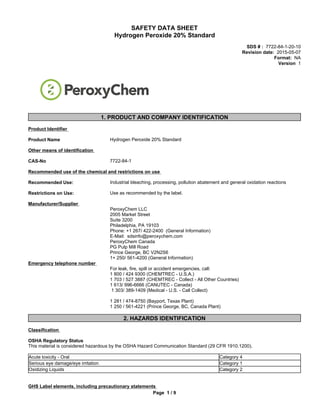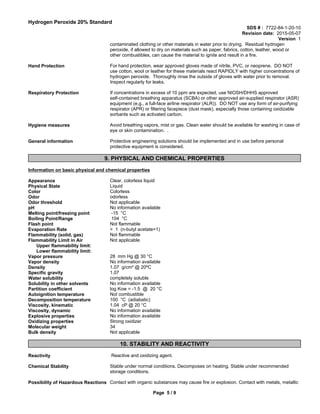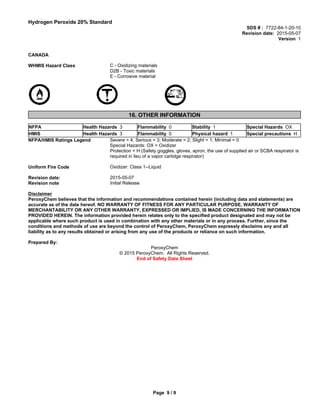This document provides a safety data sheet for a 20% hydrogen peroxide standard. It lists hydrogen peroxide and water as ingredients. Hazards include serious eye damage, acute oral toxicity, and strong oxidizing properties. Personal protective equipment like gloves, eye protection and respiratory protection are recommended when handling. The product is a clear, odorless liquid and strong oxidizer. It is stable but can decompose violently if contaminated or exposed to heat or combustible materials.








